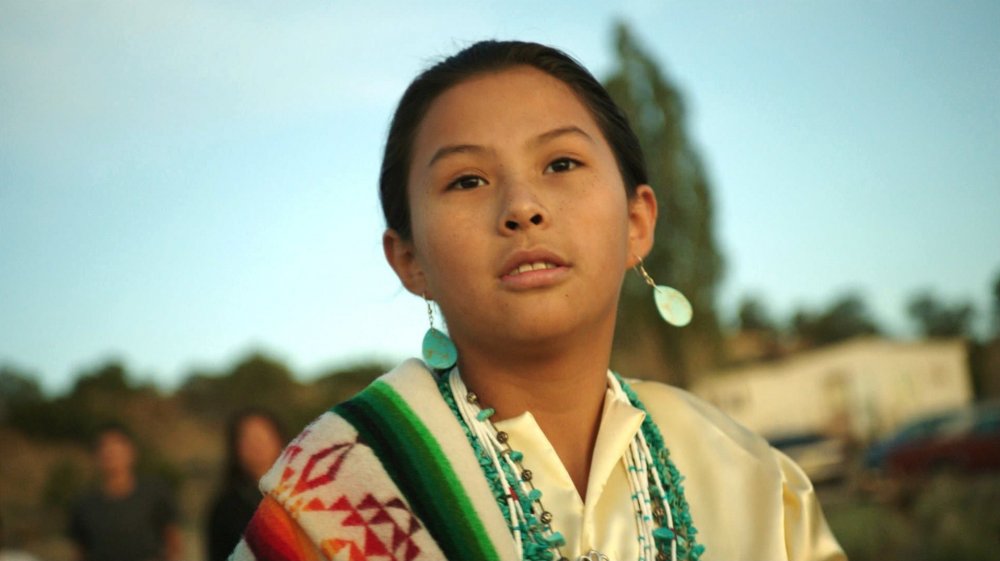Indigenous Cinema

The Criterion Collection has long taken criticism for being very white and canonical in its approach. But with The Criterion Channel and its blog, it has really rectified that in great ways. Since it’s Saturday and not everything has to be so serious, I thought I’d link to this article on indigenous cinema and the problems with “auteurism” as a way of thinking about film.
For the last twenty years—until the pandemic broke my streak—I drove each fall to spend a week at the Toronto International Film Festival (TIFF). Before making the trip, I took care to avoid reading anything about the subjects, characters, or narratives of the films; they did not matter. Instead, as my eye scanned the festival program, I took note of all the auteurs whose work I admired. Any year with a new film by Agnès Varda, Claire Denis, Hou Hsiao-hsien, or Christian Petzold was a good year. The films on the festival program that sparked my interest fell into two groups: auteurs of whom I was already a fan; and auteurs whose work held promise, beckoning me to explore further.
This was the way I approached all film festivals until a few years ago, when I first attended the imagineNATIVE Film + Media Arts Festival—the largest festival of Indigenous film and media in the world—also held each fall in Toronto. If auteurism had long been the principal cinephilic lens through which I engaged with the medium, imagineNATIVE broke its dominance in my viewing life. It did this by showing me how, when used exclusively, or even predominantly, auteurism diminishes the richness of cinema by curtailing its possibilities. What’s more, this applies especially to cinema made by marginalized people: women, Indigenous, Black, LGBTQ, disabled, and POC filmmakers.
The Black Lives Matter protests of 2020 and the starkly differential impacts of the pandemic have thrust into public consciousness—have made it impossible to deny—the pervasiveness of systemic exclusion. Such exclusion has always existed in the cultural sector. Specifically, in film culture, the machinery of auteurism has worked for decades to sideline nonwhite and non-cismale filmmakers. Because its primary focus lies in tracking the style and themes of a relatively small number of directors accorded the status of auteurs—in Eurowestern film culture, mostly hetero, white men—auteurism prizes not just individual “good” films but a filmmaker’s entire body of work, to which it returns obsessively.
This ceaseless multiplication of discourse around a privileged group of filmmakers spreads out and occupies space, installing itself center stage in film culture. Meanwhile, moving-image artists from marginalized communities, having suffered drastic historical exclusion from funding opportunities, are prevented from building a corpus of work of any significant size. Since auteurism functions by identifying patterns of continuity across an auteur’s career, marginalized filmmakers, first disadvantaged by funding systems, are harmed again, this time by the aesthetic system that is auteurism. As a result, their work—if they are lucky to be permitted to make any—generally languishes outside the field of visibility and attention.
There are at least two more reasons why marginalized filmmakers are not well served by auteurism. Since its origins in France in the 1950s, auteurist cinephilia has always privileged text over context: formal/aesthetic analysis over serious consideration of all the contextual factors—such as those related to representation, production practices, or reception—in the appreciation of a film. It’s not that auteurists are uninterested in context, but that they give it scant weight in the evaluation process. This has strong implications for which films end up in social media conversations, on end-of-year lists, and in the canon.
In point of fact, all films would benefit from increased contextual understanding, but when it comes to marginalized filmmakers, grounding their work in context becomes even more important. This is because audiences have typically had less exposure not only to this work—which often has culturally specific dimensions—but also to background knowledge relating to representational histories or production practices that might help them make full and rich sense of these films and the contexts that envelop them. For Indigenous filmmakers, such contextual knowledge becomes crucial because the industry has historically given them so few opportunities to tell their own stories on-screen.
Finally, the individualist ethos of auteurism perversely opposes the essentially collaborative nature of this art form. The imagineNATIVE festival highlights this fact by frequently framing the festival’s offerings as collective creations indebted not only to teams of moving-image makers but also to the communities represented in them—and without whom the work could not exist.
I’m increasingly getting to the point where I am less interested in “great” film and more interested in global perspectives through the camera, although between moving to a new house and the NBA playoffs, I haven’t watched much at all in the last month.


